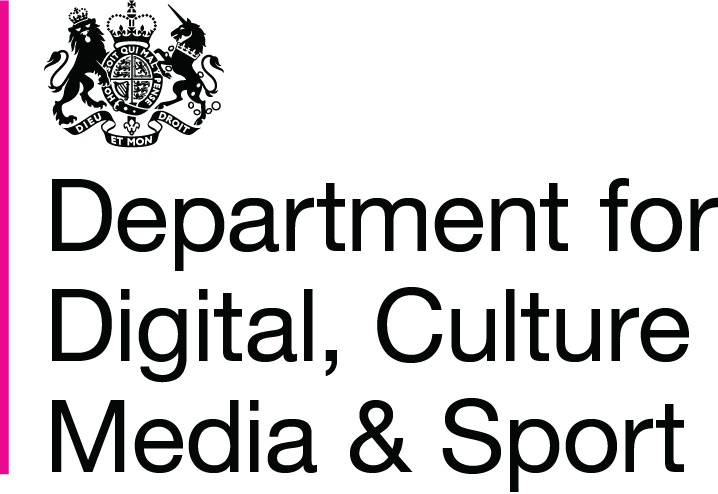Report on Gender Diversity - Let's Do It - Bath Digital Festival 2017
Organised by The Dot Project
We believe women are a huge asset within any organisation. Within the technology sector diversity is key to shaping culture, developing multi-disciplinary teams and solving problems in innovative and creative ways. As The Dot Project we champion a more diverse technology workforce, starting with improving access for women. However we know this is not an easy task for businesses. Increasing the number of women in technology roles requires a systemic change and a collective effort. Despite the challenges we also believe in the commitment and aspirations of businesses in Bath and beyond, we know that most organisations want to encourage more women into technology roles but we’re often asked what they should focus on first.
To make sense of the situation, and find some practical ways forward, we brought together over 50 businesses and gender diversity champions as part of the Bath Digital Festival. The event ‘Gender Diversity – Let’s do this’, held on Thursday 19th October, was a forum to have a frank and open discussion about how we can work collaboratively to improve gender diversity across the local area. We asked Debbie Forster MBE to lead the discussion and introduce the Tech Talent Charter, which is a nationwide initiative driving diversity and addressing gender imbalances. A core goal of the session was to map the initiatives which focus on improving diversity in Bath and the surrounding area, this short workshop provided such rich information that the full detail will follow in blog post number 2!
Debbie expertly facilitated two panel discussions which focused around the following questions:
Panel 1: What is going on to improve gender diversity?
Panel 2: What are we doing about it in Bath, Bristol and the South West?
Our panels were carefully handcrafted to ensure rich and diverse discussions, we were very lucky to have the following talent and expertise on stage:
Panel 1
Rav Bumbra: Founder of Structur3dpeople, a recruitment company on a social mission to increase diversity and inspire a new generation of talent.
Pauline Roche: Co-Founder of RnR Organisation supporting data informed programmes for community development and tech for good.
Gabby Shaw: Principal consultant at ADLIB helping ambitious organisation recruit digital, technology and eCommerce talent.
Jane Ginnever: Founding Director at Shift an expert in organisation design and HR management, shifting the way organisations think.
Michelle Carpenter: Gender expert, Project manager at Girl Stats and Human Rights Research Analyst with Verisk Maplecroft.
Panel 2
Zara Nanu: CEO of Gapsquare, a company that brings together technology and diversity and inclusion expertise to close the gender pay gap.
Ian Andrews: Managing Director at Nationwide, striving for a workplace which reflects the diverse communities and cultures of Nationwide members.
Roja Buck: CTO of Riverford Organic Farmers, a company which stands for good food, good farming and good business.
Dr Constance Fleuriot: Co-founder of Women’s Tech Hub which is on a mission to increase diversity in our tech workforce.
Nathan Baranowski: Director of Ojo Solutions and an agent of change and intervention, never afraid to get stuck in or challenge the norm.
What is the problem?
In just 3 years time, by 2020, the UK tech industry needs one million more tech workers. Currently only 17% of tech workers in the UK are female and only one in ten females are taking A-levels in computer studies. In order to ensure that our tech workforce in 2020 is more diverse, inclusive and fair something radical needs to happen.
The challenges and barriers which prevent a more diverse and inclusive technology workforce are systemic. It is often said that the pipeline is leaky, however it’s more accurate to say that the pipeline is broken. A lack of commitment and funding to each stage of the pipeline from education and training, recruitment, policy and practice, culture and retention, means that women face barriers across the pipeline. Inspiring women from a young age to study STEM is only the first step, ensuring that they are encouraged to remain engaged to continue along the pipeline is a long-term commitment.
The Tech Talent Charter is a commitment by organisations to deliver greater gender diversity in the UK technology workforce, and was supported in the government’s policy paper on the UK Digital Strategy in March 2017. Signatories fully acknowledge that diversity encompasses much more than gender, and while the majority of the charter principles and pledges are generically about diversity and inclusion, using the lens of gender allows for more focused action and tracking of impact. The Tech Talent Charter moves away from simply talking about the issue to implementing positive action to ensure women play a significant role in the growing UK tech industry.
It’s about action, collaboration and using data to drive what we can do.
Where are the opportunities?
Let’s be honest, solving gender diversity in technology is not straightforward and now is the time for energy and collective action. Most of all it’s about harnessing the opportunities that a more diverse workforce offer, let’s look at these in more detail.
- Responding to business motivations
‘Fixing the pipeline isn’t just ‘a good thing’ to do’ explained Debbie Forster, ‘it makes good business sense’. Companies in the top quartile for gender diversity are 15% more likely to have financial returns above their respective national industry medians. Studies reveal that gender diverse companies are 45% more likely to improve market share, achieve 53% higher returns on equity, and are 70% more likely to report successfully capturing new markets.
Michelle explained that as more businesses become conscious of the need to remain innovative and demonstrate ethical business opportunities grow to convince internal stakeholders within organisations that gender equality is the right thing to do. There is now a reputational risk for not achieving gender equality and employees are increasingly more socially conscious and expect equality in the workplace.
- Looking to the future
Gabby Shaw told us that we are approaching a watershed moment, a make or break situation where if we proactively seek to solve the gender diversity challenge we have the opportunity to dramatically increase the number of women within the technology industry.
Imagine the risk of not ensuring diversity in the technology sector. What are the implications of voice recognition or facial software built by all male teams? By fixing the pipeline we not only enable individuals to shift their careers but also facilitate innovation and creativity by creating more diverse teams with different perspectives. By doing this we build a sustainable and competitive technology sector which is equipped to respond to future technology needs.
- Rethinking the workplace
The workplace is changing and as a result any response to gender diversity must consider the workforce and what they expect from a work environment. Jane from Shift feels that it’s not only the pipeline that is broken, it’s also the bucket the pipeline feeds into. Employees are best placed to identify opportunities to improve the workplace and create a more diverse environment, and yet key decision makers often think they don’t have time to consult their views. One example is flexible working, Jane described how this should be a given from day one not something you earn after a period of time. By living true to diversity goals organisations engender trust and respect which can create a more loyal workforce in the long run.
What are the challenges businesses face?
It is clear that now is the time to take action, clearly there is both the need to diversify the technology sector and the desire from women to enter the technology workforce. But let’s not pretend that this problem is a new one. There are many initiatives in and around Bath which are trying to fix the pipeline, so what are the challenges they face?
- Lack of funding
Constance introduced the work of Women’s Tech Hub which is based in Bristol. This initiative provides a hub to support women in technology and it is entirely run by volunteers. The hub provides practical solutions and serves as a platform to share share useful information between women and businesses. Women’s Tech Hub run a Re:Boot internship scheme to support women back into tech after career breaks, this includes support and coaching ahead of interviews, CV writing and connecting women with business who have vacancies.
In short, this is exactly the type of initiative required to support women who are re-entering the workplace. It is reported that 76% of women on career breaks want to return to work and yet initiatives such as Women’s Tech Hub rely on volunteer time and resources. Investing in return to work initiatives would encourage experienced women to retrain or apply their skills to the technology industry.
- The problem of scale
For Nationwide the challenges of building a diverse workforce are multifaceted. On the surface, explained Ian Andrews, the figures look good. 60% of the organisation is female, however dig a little deeper and figures reveal that the majority of these women work at the branch level and only 22% of women within the company hold technology. Within the more senior technology roles female representation is good which Ian feels is important to inspire and mentor future leaders.
- The pace of change is slow
Many of our panelists mentioned that they are motivated to drive change so that future generations especially daughters have access to equal opportunities. It was a statistic at the World Economic Forum which really brought things home for Zara, with the current pace of change gender equality looks set to be solved in 117 years time. This is simply too long. Zara runs Gapsquare which enables organisations to assess the gender pay gap within their organisation and take action to close the gap and attract talent to the workplace. It’s initiatives such as Gapsquare which will encourage organisations to change the way they do things, and ultimately contribute to equality in the workplace.
- Diversity represents a shift in organisational culture
Any change to organisational culture is likely to be met with resistance. However when diversity positively influences culture the changes can be transformational. Nathan from Ojo Solutions has seen first hand how increasing the number of women in teams, and especially within senior leadership roles, can radically change perspectives and influence innovation. Businesses should talk more openly about the positive aspects of diversity, beyond the bottom line, in order to inspire and influence others.
- Wider diversity considerations
Looking at situations through a diversity lens highlights wider diversity issues. Roja from Riverford Organic Farmers explained that it remains a challenge to hire technology workers who are not white middle class males. The South-West is generally white and middle class therefore it’s a struggle to ensure other ethnic diversities are represented and this is really important. Therefore tackling diversity cannot be done in isolation and coordinated initiatives are required.
What can organisations do?
We’ve established the opportunities and highlighted the challenges so what can organisations do now to contribute to positive change in the area of diversity in technology? Here’s some top tips from our panelists:
- Sign up to the Tech Talent Charter
- Use a Gender Decoder to test out the language in your job descriptions
- Read up on the latest research from Computer Weekly
- Establish a diversity strategy and measurable goals to work towards
- Use specialist recruiters if you are struggling to find diversity in respondents to job vacancies
Next steps
We will soon be sharing the findings from our workshop which took place during the event and mapped the diversity initiatives taking place in Bath and the surrounding areas. This map will provide valuable information to identify how initiatives can align to connect the pipeline whilst also showing where the pipeline is weak.
We will be reaching out to those who attended the event to take this initiative to the next step. We are passionate about harnessing the commitment and passion of those who made it to the event, and those who couldn’t make it but want to get involved. As we know, this must be a collective initiative so we’re looking forward to developing partnerships and collaborations to keep the momentum moving. We’re only just getting started…
First published by Annie Legge, on The Dot Project - Gender diversity








